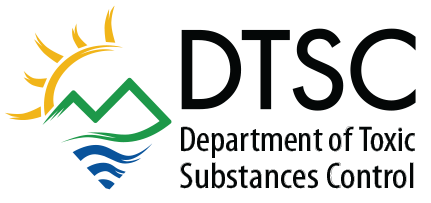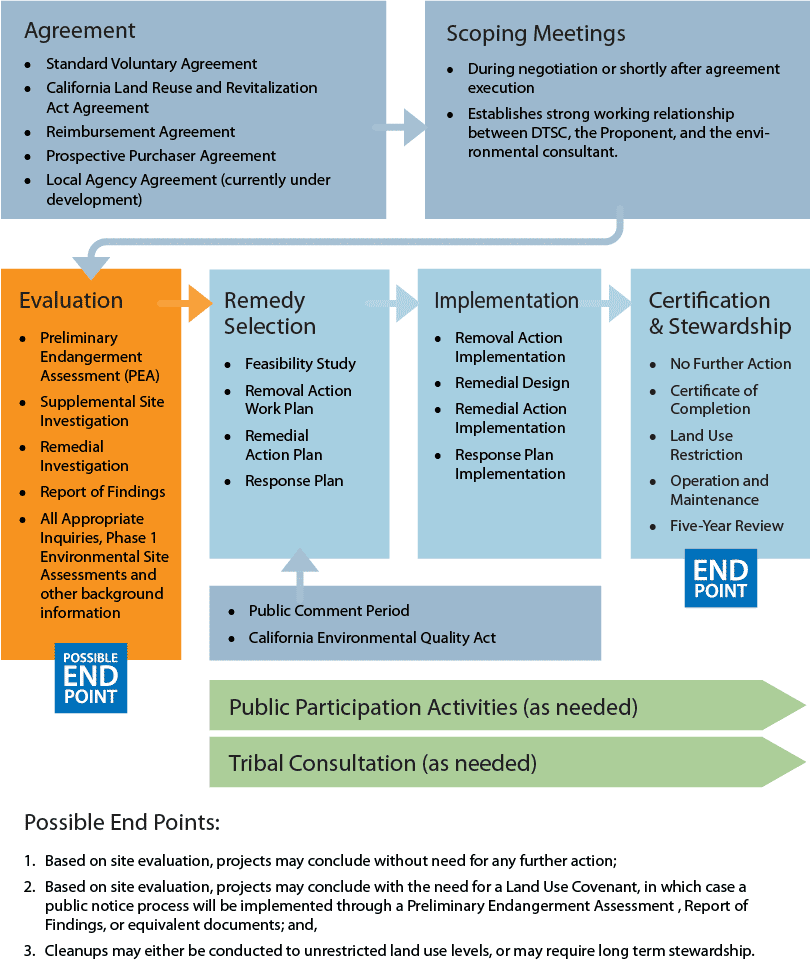Evaluation
The Quick Reference Guides focus on aspects on environmental investigation and evaluation, and include information on Preliminary Endangerment Assessments, Supplemental Site Investigations, and the Remedial Investigation process. California Land Reuse and Revitalization Act (CLRRA) related information is also presented, particularly since CLRRA has some unique aspects that are important to highlight. The DTSC Human and Ecological Risk Office (HERO) has provided abbreviated information on the human health risk assessment process, with links to more detailed information. DTSC partnered with the United States Environmental Protection Agency to outline information on managing polychlorinated biphenyl (PCB)-impacted properties in California. Additional Quick Reference Guides are under development, and the website will be updated on a routine basis. The Guides can be found in a panel to the right.
For more information, contact Maryam.Tasnif-Abbasi@dtsc.ca.gov.
Download a collection of all DTSC Voluntary Agreements Quick Reference Guides
Download PDF version of this diagram.
This document is intended to be guidance only and it does not supersede or implement laws or regulations. The information in this advisory is intended solely as guidance and as educational reference material and should not be considered enforceable or regulatory in nature.

Brownfields Links
-
- Brownfields Home
- Agreements
- Scoping Meeting
- Assessment & Investigation
- Remedy Selection
- Implementation
- Certification and Stewardship
- Equitable Community Revitalization Grant
- Community Considerate Cleanup Collaborative (C3C)
- Loans & Grants
- Local Agency Resources
- Quick Reference Guides
- Contact Information
Quick Reference Guides
- Preliminary Endangerment Assessment (PEA) Process Quick Reference Guide
- Supplemental Site Investigation Report Quick Reference Guide
- Supplemental Site Investigation Work Plan Quick Reference Guide
- Remedial Investigation & Feasibility Study Process
- Remedial Investigation Report Quick Reference Guide
- California Land Reuse and Revitalization Act (CLRRA) Site Assessment Plan/Report of Findings
- Polychlorinated Biphenyl (PCB) Evaluation Quick Reference Guide
- Human Health Risk Assessments Quick Reference Guide
Site Mitigation & Restoration Program Links
- Brownfields
- Cleanup in Vulnerable Communities Initiative (CVCI)
- EnviroStor
- Exide
- Human and Ecological Risk Office
- Lead-Acid Battery Recycling Facility Investigation and Cleanup Program
- Loans & Grants
- Land Use Restriction Sites
- Santa Susana Field Laboratory
- School Sites
- Sea Level Rise
- State Superfund Program
- Strategic Plan and Program Enhancement Work Plan
- Vapor Intrusion
- Contact Information


